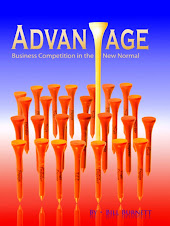As an innovation talent coach, I find the single most important aspect of culture in a company defined in how people interact. There are two crucial factors. First, in many hierarchical companies interactions often have an undercurrent of position and privilege. The notion of superior/subordinate translates into a adult-to-child relationship where the ‘child’ looks to respond to the ‘adult’ to avoid displeasure. We hire people for their brains. This relationship undercuts that key asset. If you think about it, when an adult is present in a room full of children, the children look to the adult to solve problems. This sort of relationship is evident in many of the stories Bob tells related to his No Asshole Rule. It is an unpleasant environment for everyone except perhaps the CEO.
Many companies are adept at avoiding this trap. Gore is a company that does this well. I consulted for an Australian company where the new turn-around CEO established a single internal job title: ‘Colleague’. He inverted the organization chart putting the customer on top and the people who interacted with customers just below them, and all the management team (he called ‘team leaders’) underneath them. The chart underscored the role management plays in supporting the work done by the people who actually produce the goods and services for customers. He did some other clever organizational shifts as well. The results were phenomenal: – a 16-fold increase in sales; ROE reached 35% after tax, and increased market share from 4% to 16%.
In the famous example of the NUMMI plant in Freemont California just across the bay from Stanford, the old hierarchy was thrown out and replaced with three levels for the entire plant – Team Leader (a union worker), Group Leader, and Plant Management. The plant was managed by (drum roll please) HR! At NUMMI everyone actually working was ‘Team Member’ with a single pay grade.
Second, is a two step engagement process: 1) Link the sense of personal worth to the job. This is the 5 why-is-that-importants. You ask why a function is important, and then why that (the answer to the first why) is important, until you reach something like ‘because it help people’ or ‘because it makes life better’. You’re a tax collector, why is that important? … ‘Because good roads and excellent schools make the world a better place.’
2) Organize the work such that it is team work. Now you have a team that is working together ‘to make the world better’. Nothing is more fun than working on a team with a great purpose, and nothing drives the desire for excellence more strongly than working together to make the world better. It is the most powerful workplace motivator.
Friday, October 24, 2008
Thursday, October 16, 2008
Layoffs in Recessionary Times
I am working on an article on innovation during recessionary times. Part of the article talks about who is a likely lay-off candidate, and the risks to the company that it will lay off its best problem solvers. Robert Sutton of Stanford University (author of “The No Asshole Rule” and “Weird Ideas That Work”) and I have been exchanging emails and he blogged on the issue today.



Labels:
downsizing,
hard times,
layoffs,
problem solving,
recession,
Sutton
Wednesday, October 8, 2008
Adam Hartung at MENG
Yesterday I attended the MENG Chicago meeting as a guest of Buckley Brinkman. Buckley and his partner Dan Wallace have just launched their new company Launchpad Partners with the mission to help company owners triple the value of their businesses in 12-18 months.
Subscribe to:
Posts (Atom)






